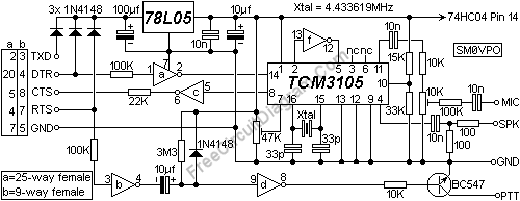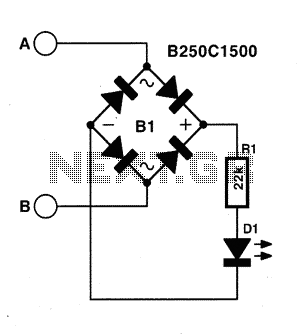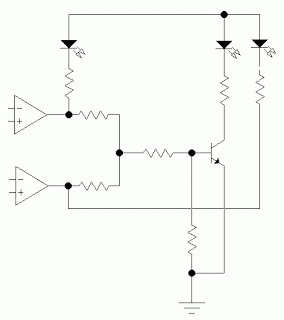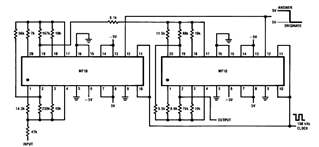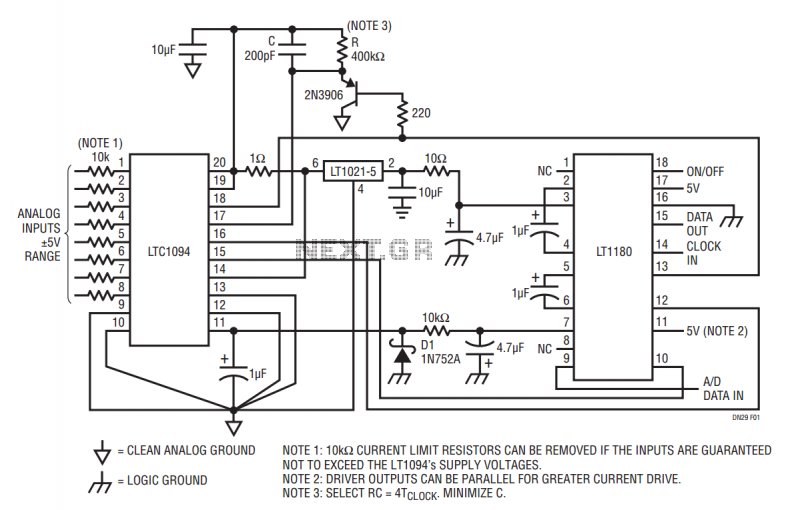
RS232 cable modem
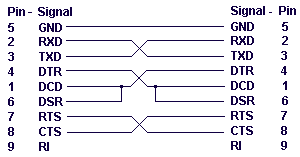
First of all you have to build one cable adapter to connect the female 9pins connector of the modem, with female 9pins connector of the base of E-10G HPC. To build the null modem cable you will need: 2 male connectors with 9 pins. 15cm cable with 7 wires. The schematic at the left shows how to connect the wires. When you finish it, you can connect the modem with E-10G. I have tested it with: ISDN NetMod (from Intracom, used by the Greek organization of telecommunications, OTE). U.S. Robotics 56K modem. For internet explorer try the iBrowser v1.17.02 or Pocket Browser v1.6.
When you build the cable adapter connect the E-10G with the external modem, power-on both devices and follow the pictures. Go to Start->Programs->Communications->Connection and click on new connection. Select "Hayes-compatible on COM1" and then click on "Configuration". Set the baud rate to 19200 (some modems work with 115200 bps too). When you finish and everything is working, try to increase the baud rate until 115200. Press the next tab and uncheck "wait for dial tone before dialing" and then click "OK". Press "TCP/IP Settings" to set the "IP address" and "DNS address" if your provider needs them. Click "Next", type the "phone number" of your internet provider and click "Finish". Click on "My connection". Give the username and the password, click on "dialing properties". Enter a "G" in all fields. Click "OK", "OK" and then click "Connect". If the E-10G cannot communicate with the modem, ensure the "wait for dial tone before dialing" option is unchecked. Then decrease the baud rate to 19200. If it is not working, try to connect manually by checking the "manual connection" option. Try to run "My connection" again and you will see the terminal screen. Type "atdt" for dial tone or "atdp" for dial pulse followed by the phone number of your internet provider (example: atdt0962599999). When the modem is connected, click "OK".
The described setup involves creating a null modem cable to facilitate communication between a modem and an E-10G HPC base. The null modem cable is essential as it allows for direct data transmission by crossing the transmit and receive lines, effectively enabling two devices to communicate as if they were connected via a standard serial connection.
The cable assembly requires two male 9-pin connectors and a 15cm length of cable with seven internal wires. The connections are typically made as follows: Pin 2 (Transmit Data) of the first connector should connect to Pin 3 (Receive Data) of the second connector, and vice versa. Additionally, Pin 5 (Ground) from both connectors should be connected together to establish a common ground reference. Other pins may be used for flow control signals, depending on the specific requirements of the devices involved.
Once the cable is constructed and the devices powered on, the user must configure the connection settings. The configuration process involves selecting the appropriate COM port and setting the baud rate, which is crucial for ensuring that both devices communicate effectively. The baud rate of 19200 is a common starting point, but it may be adjusted to 115200 if supported by the modem.
Further steps include configuring TCP/IP settings to ensure proper internet connectivity. This involves entering the necessary IP address and DNS settings as required by the Internet Service Provider (ISP). The user is guided through a series of prompts to establish a connection, including entering the phone number of the ISP and user credentials.
In case of communication issues, troubleshooting steps include verifying the connection settings, ensuring that the "wait for dial tone before dialing" option is unchecked, and manually initiating the connection if automatic methods fail. The terminal commands, such as "atdt" or "atdp", facilitate dialing out to the ISP, completing the connection process.First of all you have to build one cable adapter to connect the female 9pins connector of the modem, with female 9pins connector of the base of E-10G HPC. To build the null modem cable you will need: 2 male connectors with 9 pins. 15cm cable with 7 wires. The schematic at the left , its show how to connect the wires. When you finish it, you can connect the modem with E-10G. I have test it with: ISDN NetMod ( From Intracom, its used by the Greek organization of telecommunications, OTE ).
U.S. Robotics 56K modem. For internet explorer try the iBrowser v1.17.02 or Pocket Browser v1.6. When you build the cable adapter connect the E-10G with the external modem, power-on both devices and follow the pictures. (Picture 1) Go to Start->Programs->Communications->Connection and click on new connection (Picture 2) Select ?Hayes-compatible on COM1:?
and then click on ?Configuration?. Set the baud rate to 19200 (Some modems works with 115200 bps too. When you finish and everything its working, try to increase the baud rate until to 115200). (Picture 4) Press the next tab and uncheck ?wait for dial tone before dialing? and then click ?OK?. (Picture 5) Press ?TCP/IP Settings? to set the ?IP-address? and ?DNS address? if your provider its need them. Click ?Next? (Picture 6) , type the ?phone number? of your internet provider and click ?Finish?. (Picture 7) Click on ?My connection?. (Picture 8) Give the user name and the password ,click to ?dialing properties?. (Picture 9) Click ?Bearb??. Enter a ?G? in all fields. Click ?OK?, ?OK? and then click ?Connect?. If the E-10G cannot communicate with the modem, look the ?wait for dial tone before dialing? option (Picture 4) to be unchecked. Then decrease the baud rate to 19200 (picture 3). If it?s not working, try to connect manually, by checking the ?manual connection? option (Picture 3). Try to run the ?My connection? again and you will see the terminal screen( Picture 12). Type ?atdt? for dial tone or ?atdp? for dial pulse and then the phone number of your internet provider ( example: atdt0962599999 ).When the modem its connected click ?OK?. 🔗 External reference
When you build the cable adapter connect the E-10G with the external modem, power-on both devices and follow the pictures. Go to Start->Programs->Communications->Connection and click on new connection. Select "Hayes-compatible on COM1" and then click on "Configuration". Set the baud rate to 19200 (some modems work with 115200 bps too). When you finish and everything is working, try to increase the baud rate until 115200. Press the next tab and uncheck "wait for dial tone before dialing" and then click "OK". Press "TCP/IP Settings" to set the "IP address" and "DNS address" if your provider needs them. Click "Next", type the "phone number" of your internet provider and click "Finish". Click on "My connection". Give the username and the password, click on "dialing properties". Enter a "G" in all fields. Click "OK", "OK" and then click "Connect". If the E-10G cannot communicate with the modem, ensure the "wait for dial tone before dialing" option is unchecked. Then decrease the baud rate to 19200. If it is not working, try to connect manually by checking the "manual connection" option. Try to run "My connection" again and you will see the terminal screen. Type "atdt" for dial tone or "atdp" for dial pulse followed by the phone number of your internet provider (example: atdt0962599999). When the modem is connected, click "OK".
The described setup involves creating a null modem cable to facilitate communication between a modem and an E-10G HPC base. The null modem cable is essential as it allows for direct data transmission by crossing the transmit and receive lines, effectively enabling two devices to communicate as if they were connected via a standard serial connection.
The cable assembly requires two male 9-pin connectors and a 15cm length of cable with seven internal wires. The connections are typically made as follows: Pin 2 (Transmit Data) of the first connector should connect to Pin 3 (Receive Data) of the second connector, and vice versa. Additionally, Pin 5 (Ground) from both connectors should be connected together to establish a common ground reference. Other pins may be used for flow control signals, depending on the specific requirements of the devices involved.
Once the cable is constructed and the devices powered on, the user must configure the connection settings. The configuration process involves selecting the appropriate COM port and setting the baud rate, which is crucial for ensuring that both devices communicate effectively. The baud rate of 19200 is a common starting point, but it may be adjusted to 115200 if supported by the modem.
Further steps include configuring TCP/IP settings to ensure proper internet connectivity. This involves entering the necessary IP address and DNS settings as required by the Internet Service Provider (ISP). The user is guided through a series of prompts to establish a connection, including entering the phone number of the ISP and user credentials.
In case of communication issues, troubleshooting steps include verifying the connection settings, ensuring that the "wait for dial tone before dialing" option is unchecked, and manually initiating the connection if automatic methods fail. The terminal commands, such as "atdt" or "atdp", facilitate dialing out to the ISP, completing the connection process.First of all you have to build one cable adapter to connect the female 9pins connector of the modem, with female 9pins connector of the base of E-10G HPC. To build the null modem cable you will need: 2 male connectors with 9 pins. 15cm cable with 7 wires. The schematic at the left , its show how to connect the wires. When you finish it, you can connect the modem with E-10G. I have test it with: ISDN NetMod ( From Intracom, its used by the Greek organization of telecommunications, OTE ).
U.S. Robotics 56K modem. For internet explorer try the iBrowser v1.17.02 or Pocket Browser v1.6. When you build the cable adapter connect the E-10G with the external modem, power-on both devices and follow the pictures. (Picture 1) Go to Start->Programs->Communications->Connection and click on new connection (Picture 2) Select ?Hayes-compatible on COM1:?
and then click on ?Configuration?. Set the baud rate to 19200 (Some modems works with 115200 bps too. When you finish and everything its working, try to increase the baud rate until to 115200). (Picture 4) Press the next tab and uncheck ?wait for dial tone before dialing? and then click ?OK?. (Picture 5) Press ?TCP/IP Settings? to set the ?IP-address? and ?DNS address? if your provider its need them. Click ?Next? (Picture 6) , type the ?phone number? of your internet provider and click ?Finish?. (Picture 7) Click on ?My connection?. (Picture 8) Give the user name and the password ,click to ?dialing properties?. (Picture 9) Click ?Bearb??. Enter a ?G? in all fields. Click ?OK?, ?OK? and then click ?Connect?. If the E-10G cannot communicate with the modem, look the ?wait for dial tone before dialing? option (Picture 4) to be unchecked. Then decrease the baud rate to 19200 (picture 3). If it?s not working, try to connect manually, by checking the ?manual connection? option (Picture 3). Try to run the ?My connection? again and you will see the terminal screen( Picture 12). Type ?atdt? for dial tone or ?atdp? for dial pulse and then the phone number of your internet provider ( example: atdt0962599999 ).When the modem its connected click ?OK?. 🔗 External reference
